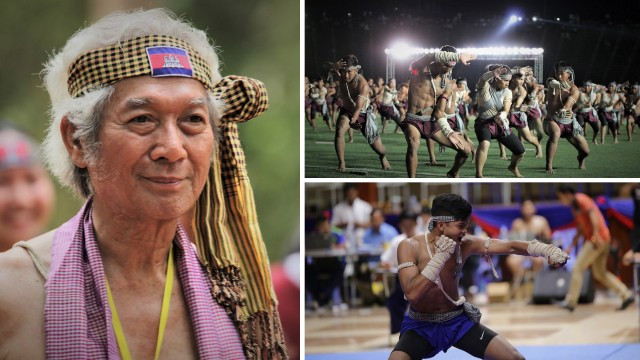“Bokator” is a traditional Cambodian martial art that has a rich history and cultural significance in Cambodia. It is considered one of the oldest martial arts in existence, with roots dating back over a thousand years. The name “Bokator” is derived from the Sanskrit words “bok” meaning “to pound” and “ator” meaning “lion.”
Here are some key aspects of Bokator:
1. **Origins and History**: Bokator traces its origins to ancient Khmer warriors who developed the art as a means of self-defense and combat. It was practiced by soldiers in battle and as a form of physical training. Bokator techniques were traditionally passed down through oral tradition and practiced in secret to preserve its knowledge.
2. **Techniques and Training**: Bokator incorporates a wide range of striking techniques, grappling, joint locks, throws, and weapon techniques. Practitioners learn to use their entire body as a weapon, utilizing elbows, knees, fists, feet, and various parts of the body for striking. Training typically involves rigorous physical conditioning, flexibility exercises, forms (known as “taols”), and sparring.

3. **Cultural Significance**: Bokator is deeply rooted in Cambodian culture and history. It is considered a cultural treasure and a symbol of Khmer identity. Historically, Bokator was practiced by Khmer warriors to defend the kingdom and protect its people. It is also associated with rituals, ceremonies, and folklore.
4. **Preservation and Revival**: Like many traditional martial arts, Bokator faced challenges during periods of conflict and political upheaval in Cambodia. However, efforts have been made to preserve and revive the art in recent years. Organizations and practitioners have worked to document Bokator techniques, establish schools, and promote its practice both domestically and internationally.

5. **Modern Practice and Competition**: Today, Bokator is practiced by people of all ages in Cambodia and around the world. It is taught in martial arts schools, universities, and community centers. Bokator competitions and demonstrations are held in Cambodia and other countries, showcasing the art’s techniques, skills, and cultural significance.
Overall, Bokator is more than just a martial art; it is a living tradition that embodies the spirit, history, and identity of the Khmer people. It continues to thrive as a testament to Cambodia’s rich cultural heritage.
